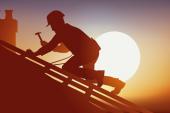Psychosocial Stressors in White-Collar Jobs Up CHD Risk in Men
The analysis didn’t find a similar relationship in women, but a different study design might have uncovered something similar.

The risk of coronary heart disease (CHD) goes up with increased workplace stress among white-collar male—but not female—workers, according to new prospective data.
The link between psychosocial stressors like longer job hours and bullying and violence in the workplace and CVD risk is well known, but the extent of this risk has not always been clear, according to the researchers.
“As CHD remains a significant public health concern, understanding how psychosocial stressors at work can impact heart health became a compelling reason to conduct this research,” lead author Mathilde Lavigne-Robichaud, MSc (CHU de Québec-Université Laval Research Center, Quebec City, Canada), told TCTMD in an email. “Additionally, psychosocial stressors at work are modifiable, prevalent, and long-term risk factors, further emphasizing the importance of investigating and addressing them to reduce CHD risk. We wanted to shed light on an area that can have substantial implications for individuals and workplaces.”
The study, published online this week in Circulation: Cardiovascular Quality and Outcomes, found significant relationships between job strain and effort-reward imbalance (ERI) among men who were followed for 18 years; the absence of an association in women merely suggests no “consistent relationship between psychosocial job stressors and CHD risk” in this cohort, Lavigne-Robichaud explained. It’s likely that because heart disease often develops later for women that there were not enough CHD events reported in the study to identify a significant relationship.
“Additionally, women may experience cardiovascular events much later after exposure to workplace stress, making it challenging to establish a clear connection within the study's timeframe,” she added. “However, it's important to continue investigating how workplace stress affects women's heart health to gain a more comprehensive understanding.”
Exposure and CHD
For the study, the researchers included 6,465 white-collar workers without known CVD (mean age 45.3 years; 51.8% women) from the Prospective Quebec (PROQ) Cohort who were enrolled between 1999 and 2001 and followed through 2018. Each had filled out surveys identifying their amount of job strain and if they had effort-reward imbalance (ERI), defined as whether their efforts and psychological demands outweighed the rewards they received from their job.
The amount of job strain reported was well distributed between the low, passive, and active categories for both men and women, with men most often reporting active job strain (34.25%) involving both high demands and high control, and women most often reporting passive job strain (42.87%), defined as low demands and low control. ERI, which is tied more to broader socioeconomic conditions like salaries, promotion, and job stability, was observed for 24.7% and 23.2% of men and women, respectively. Combined exposure to job strain and ERI was found in 8.3% of men and 10.3% of women.
A total of 571 and 265 incident CHD cases were recorded among men and women over the follow-up period, respectively.
Compared with men who were unexposed to psychosocial stressors at work, those with low (HR 1.15; 95% CI 0.85-1.56) or intermediary exposure to job strain or ERI (HR 1.49; 95% CI 1.07- 2.09) as well as those exposed to both (HR 2.03; 95% CI 1.38-2.97) were at increased risk of CHD on follow up. No similar significant relationships were found for any of these comparisons in women.
“One of the most surprising results of our study was the magnitude of the risk increase associated with the combination of job strain and ERI, particularly among men,” Lavigne-Robichaud said. “Seeing such a significant doubling of the risk reinforced the urgency of addressing these stressors to protect heart health.”
It’s likely that the link between job strain, ERI, and CHD risk is “multifactorial,” she continued. “These psychosocial stressors can directly impact the cardiovascular system by triggering physiological responses, including increased heart rate, higher blood pressure, and blood vessel narrowing. Additionally, long-term exposure to such stressors may contribute to the development of chronic inflammation, which is a known risk factor for CHD.”
All of these associations were independent of lifestyle factors, she stressed, “emphasizing a pathological pathway beyond lifestyle choices. Therefore, while stress responses play a role, the relationship between job strain, ERI, and CHD risk likely involves a complex interplay of physiological, behavioral, and inflammatory factors.”
Several Mechanisms at Play
Commenting on the study for TCTMD, Paul Landsbergis, PhD, MPH (State University of New York-Downstate Health Sciences University, Brooklyn, NY), speculated that, had the study been able to include a wider range of working conditions, it likely would have identified significant associations between stressors and CHD risk in women. Additionally, he noted, “there are many other work stressors out there—long work hours, bullying, discrimination, harassment, and work family conflict. And the two stressors [included in the study] pick up a little bit of these other types of stressors, but perhaps if they had additional measures of other stressors, they might have found stronger associations.”
He agreed that several mechanisms seem to be at play here. “One is, of course, the body stress response—cortisol, adrenaline, its effect on the blood pressure,” Landsbergis said. “But we know that work stressors can also affect people's health behaviors; maybe lead to less exercise or eating more unhealthy food. It can also . . . [lead to] greater exposure to other sources of stress.”
It’s possible too that the previously-identified link between employment-based physical activity and increased heart disease risk could factor in here. “There is something different about the nature of the physical activity at work where you might not be able to take a break compared to leisure time where you're doing it usually at your own pace and certainly not all day,” Landsbergis commented.
He's hopeful the study emphasizes the importance of prevention. “The treatment is great, but we're facing a situation in this country where after years and years of a decline in the death rate from heart disease, now the death rate from heart disease has started to increase just within the last 10 years or so, especially in working aged people 20 to 65,” Landsbergis said.
Similarly, Lavigne-Robichaud said she would like the study to “lead to positive changes in workplaces, policy, and individual health outcomes. Specifically, we anticipate increased awareness and action to reduce psychosocial stressors in the workplace, ultimately contributing to a healthier workforce.”
Next, the research team plans to look at “the gender-specific effects of workplace stressors on heart health and understanding the underlying mechanisms,” she said. “This entails unraveling how psychosocial stressors uniquely influence the cardiovascular health of both men and women.” Additionally, they would like to gauge effectiveness of a variety of workplace interventions “aimed at mitigating stress and promoting well-being.”
Lavigne-Robichaud emphasized the importance of “recognizing that workplace stressors are not solely individual challenges but represent broader determinants of health within the work environment.” Addressing them collectively will be vital to reduce overall incidence of CHD an improve overall well-being, she concluded.
Yael L. Maxwell is Senior Medical Journalist for TCTMD and Section Editor of TCTMD's Fellows Forum. She served as the inaugural…
Read Full BioSources
Lavigne-Robichaud M, Trudel X, Talbot D, et al. Psychosocial stressors at work and coronary heart disease risk in men and women: 18-year prospective cohort study of combined exposures. Circ Cardiovasc Qual Outcomes. 2023;16:e009700.
Disclosures
- Lavigne-Robichaud reports receiving supported by a PhD grant from les Fonds de Recherche du Québec en santé.
- Landsbergis reports serving as a consultant to the Healthy Work Campaign.





Comments